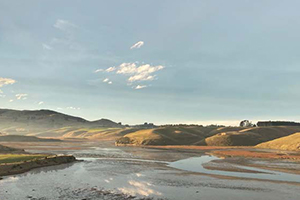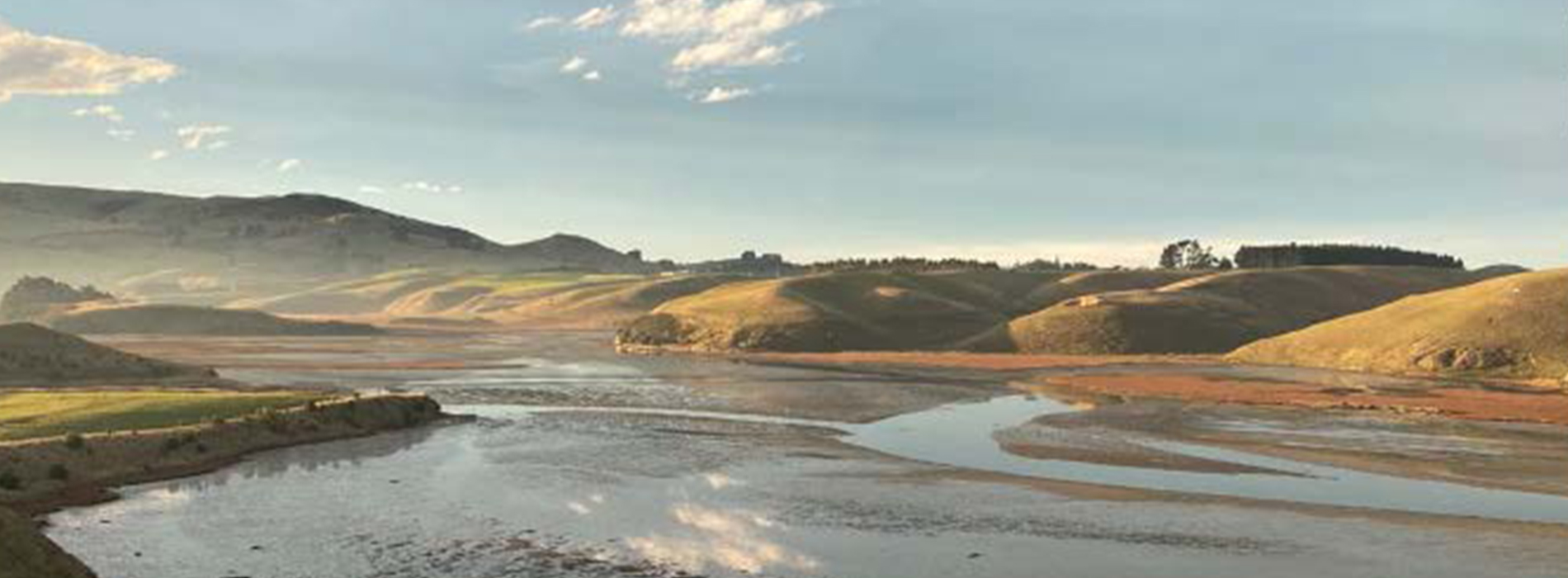
Culture Etc.

About Town: Dunedin
Partying students aside, the Edinburgh of the south is a place of Presbyterian reserve and quiet pride.
By Morgan Godfery
If you want it to be, Dunedin is the perfect place for a spot of “dark tourism”. The Seacliff Lunatic Asylum, where almost 40 patients lost their lives in an inferno in 1942, is billed as an “off the beaten track” tourist attraction. Apparently a local company runs a “hair-raiser tour” as well, walking tourists through the local haunts, as it were. For the record I’ve never done the tour and I don’t plan to, but I do wonder whether it takes in the Bain murder site? Or David Gray’s Aramoana? I suspect that’s too on the nose, though if Dunedinites are good for anything it’s a laugh — albeit in the face of terrible tragedy.
What else can you do?
I’m a recent transplant to Dunedin, and live along its northern rural fringe in Waikouaiti. The town’s beach is one of the finest in Otago with ancient pa sites on both its northern and southern headlands: one for war and one for peace. They mark the town’s unofficial boundaries, the beach curving between them like a horseshoe. It’s perfect for swimming in the summer months and a decent spot for watching oystercatchers and, if you’re lucky, whales. Less appealingly, at the golf course which hugs the foreshore, water testing late last year found lead levels more than 40 times the acceptable limit for human consumption.
Tourists to Dunedin tend to focus their time on the kitsch attractions: the Octagon (apparently it’s laid out “like Edinburgh”, but that seems like a reach); Larnach Castle, the “only castle in New Zealand” (by the standards of the British aristocracy of the time it’s merely a modest country home); and Forsyth Barr stadium, mainly for its Elton John concerts. Instead, I’d recommend the city’s natural landmarks, and will here endorse for a second time the beaches on the city fringe. On the way to Waikouaiti you can stop off at Waitati, a gorgeous sandspit with helpful Waitaha history signposted at the entrance, and “Doctors Point”, the beach I prefer to call “Health Minister’s Mistake” after David Clark’s unfortunate beach walk during level-4 lockdown.
I’m doing my best to get it to catch on, and I rate my chances for a rename — mostly because Dunedin’s sense of humour is weird. What makes the city particularly odd, at least from the perspective of someone new to town, is how the apparently down and out exist uncomfortably close to the thousands of students on the make who pour in in their thousands at the start of every year. North Dunedin, home to the University of Otago and its flatting precinct, is the closest New Zealand comes to an American or British university town. Tertiary educations keep the rest of the city in business, and its students and staff (which includes me) populate the surrounding suburbs. You notice this over the summer break when tens of thousands of students packing off home turns this area of Dunedin (without wanting to extend my metaphor too far here) into a ghost town.
I’m doing my best to get it to catch on, and I rate my chances for a rename — mostly because Dunedin’s sense of humour is weird. What makes the city particularly odd, at least from the perspective of someone new to town, is how the apparently down and out exist uncomfortably close to the thousands of students on the make who pour in in their thousands at the start of every year. North Dunedin, home to the University of Otago and its flatting precinct, is the closest New Zealand comes to an American or British university town. Tertiary educations keep the rest of the city in business, and its students and staff (which includes me) populate the surrounding suburbs. You notice this over the summer break when tens of thousands of students packing off home turns this area of Dunedin (without wanting to extend my metaphor too far here) into a ghost town.
You can take tours of the university campus — members of the public can take themselves around the grounds — and I’d recommend it for people with an interest in gothic architecture or “breather” culture (better known in the UK as “lad culture” or the US as “frat” culture). It’s strange for a North Islander to walk the grounds. Where I’m from, public organisations and property developers preserve neither Māori nor settler history. Rip down the villa. Build over bones. That sort of thing. This isn’t to say Dunedin preserves its Māori history all that well, but at least they preserve some of the grander vestiges of their Scottish heritage, from churches to mansions like Olveston, nestled in to the Town Belt in North Dunedin, a historic home many times more impressive than Larnach.
But back to the university. The flat at 660 Castle Street (from which the band “Six60” took their name) is something of a tourist attraction in the university precinct, a short walk from the clocktower at the heart of campus. Every now and then, I spot out-of-towners making a stop to take vulgar photos or sink a Speights, the house number framed behind them. It’s one of the quickest ways to spot someone who doesn’t quite belong.
If you take a stroll down Castle Street on Monday morning, it’s a maze of kicked-over wheelie bins, broken glass, and all the other detritus of a night out.
If Dunedin is good at anything, it’s a polite Presbyterian reserve. This is probably true of most towns in New Zealand — a country where it’s culturally inappropriate to make too much fuss or, heaven forbid, look like a try hard — but Dunedinites take this trait from vague New Zealand culture to article of faith. This is something I think about every time someone says “morning” to me on my daily walk while looking just past my shoulder — direct eye contact being just a little too personal.
Well, maybe it’s that, or perhaps locals can pick me as a university man. Our relationship to Dunedin as university employees is complex. We’re essential, sure. Yet the rest of town sometimes seems to resent our presence. We’re not part of the working-class community — senior managers can earn up to about $160,000, and senior professors up to around $180,000 — meaning many of the academic and professional staff aren’t necessarily living in and contributing to communities like South Dunedin. One of the quirks of Dunedin, a city since the 1860s, is that parts of it retain the class geography of the 19th century: the working class in South Dunedin’s basin, the university in its leafy northern corner, and the capitalists on prime, elevated land on Māori Hill (not named for its Māori residents, obviously, but reputedly for the Māori who helped build the early city).
Yet this is a world — of business and business owners — that we university people don’t quite fit with either. The university’s strong lean left makes social contact with the residents of old-money suburbs somewhat stilted (at best) or tense (at worst).
This is partly why I prefer Waikouaiti. I grew up in Kawerau, a small town in the North Island, and Waikouaiti is comforting and familiar to me. But more than that, here you simply don’t have to deal with people. I imagine this is one reason why the rest of the Dunedin community lives somewhat apart from the student precinct. The university deliberately markets what is euphemistically known as “the Otago experience”, and many of the students who pick Otago in year 13 do so in order to participate in it. This isn’t to say the university is only a party vibe. We’re the most research-intensive university in the country, with the best science facilities and teachers and the best MBA programme (I had to get this plug in), but we’re also responsible for the rowdiest weeknights and weekends in the country. If you take a stroll down Castle Street on Monday morning, it’s a maze of kicked-over wheelie bins, broken glass, and all the other detritus of a night out: lone shoes, lost earrings, and the like.
Of course, none of this is to suggest the students aren’t important members of the community. It’s impossible to imagine Dunedin as anything other than a university town, bringing in thousands of newcomers every year. Thousands leave, too, with a loud commitment to the university and city. Parochialism is a thing here. Usually this would turn me off a place, but it doesn’t express itself in the usual ways — like a hatred of other places, mostly Auckland, which is always a chauvinism, not a form of local pride. Instead, in Dunedin this manifests as a quiet self-esteem. People are proud of their university, they’re proud of their institutions like the library or the public art gallery or the newspaper, and they like it kept secret.
Morgan Godfery is a writer and political commentator. He lives in Dunedin with his partner.
This story appeared in the April 2021 issue of North & South.
